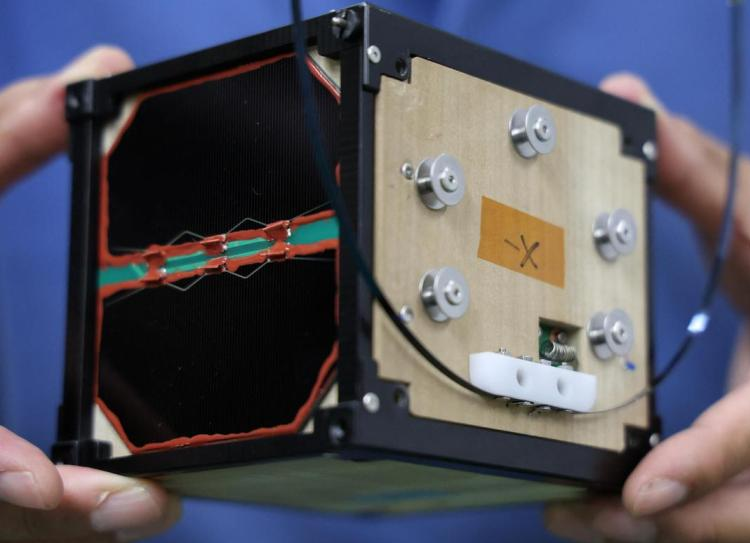
Kyoto (Reuters) - The world's first wooden satellite built by Japanese researchers blasted off on Tuesday in an initial test of whether wood could be used in missions to the moon and Mars.
The satellite, called LignoSat, developed by Kyoto University and builder Sumitomo Forestry, flew to the International Space Station (ISS) on a SpaceX rocket on Tuesday, before entering orbit about 400 kilometers above Earth.
The satellite is made of wood from a Japanese magnolia tree, using a traditional Japanese technique that eliminates screws and adhesives. The mission is to explore the potential of wood, a renewable material, for use in space.
The palm-sized satellite will stay in orbit for half a year to test the wood's tolerance in the extreme environment, where day turns to night every 45 minutes and temperatures fluctuate from minus 100 degrees Celsius to 100 degrees Celsius.
Kyoto University professor and former astronaut Takako Doi, leader of the wooden satellite design team, pointed out that if wood can be proved as a space material, humans can use wood to build houses in space, live and work in space. The design team's goal is to plant trees and build houses on the Moon and Mars within 50 years.
Researchers believe that wood is more durable in space than on Earth, because there is no oxygen to cause wood to burn, and there is no water to cause wood to rot.
Wooden satellites are also more environmentally friendly than metal ones. When the metal satellite completes the mission and returns to the earth, it will release a large number of alumina particles, resulting in the destruction of the ozone layer and affecting the ecological environment of the earth. Wooden satellites only burn up on re-entry and pollute less.

Junior doctors in the UK officially launched a five-day strike on Wednesday (December 17th).
Junior doctors in the UK officially launched a five-day str…
The Thai Pride Party is considering nomasting three candida…
With the continuous intensification of international sancti…
With $15.82 billion in sales and a 108% year-over-year incr…
According to the South Korean media Dealsite, the recent te…
The current geopolitical conflicts around the world are oft…